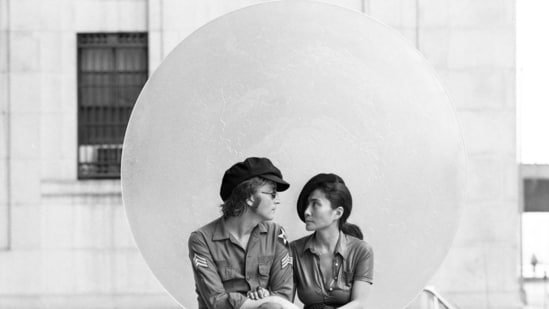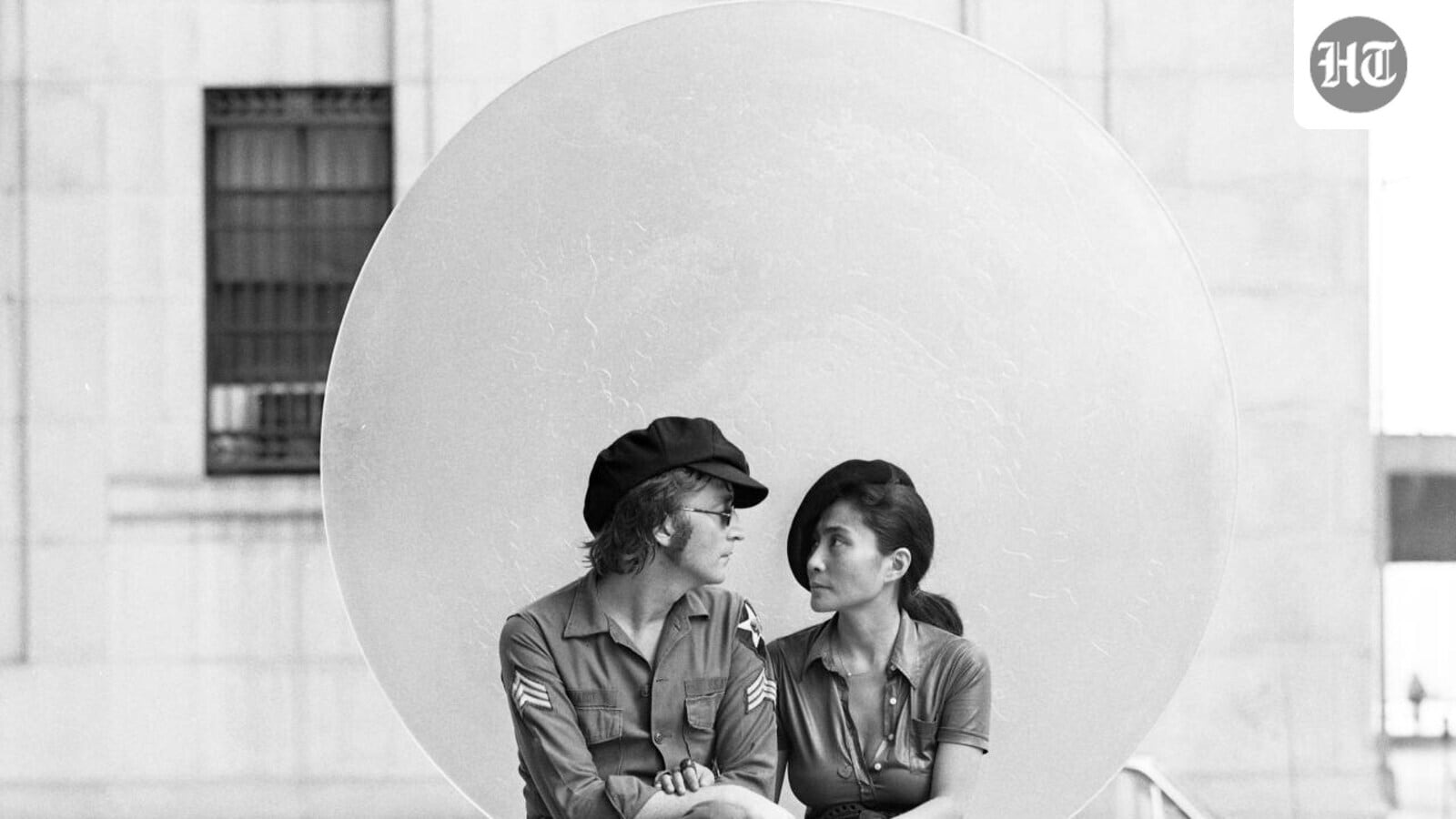John Lennon was the most overtly political of the Beatles, and he was at his most outspoken during his first years in New York, in 1971 and 1972, when his circle included the likes of Jerry Rubin and Abbie Hoffman, of the Chicago Seven, and Black Panther Party members Angela Davis and Bobby Seale. Political engagement seems to have made Lennon and his wife, Yoko Ono, remarkably creative. Working mostly collaboratively during this period, they made avant-garde films and an album, “Some Time in New York City,” devoted to topical songs with a political edge. And though Lennon was a reluctant live performer, the couple made several television appearances, as well as a cameo with Frank Zappa at the Fillmore East.
 PREMIUM John Lennon and Yoko Ono.
PREMIUM John Lennon and Yoko Ono.
They performed at several benefit shows as well, including concerts for the victims of the Attica prison riots and for John Sinclair, a Michigan activist jailed for marijuana possession. Their most ambitious performances, though, were the two “One to One” concerts—Lennon’s only full-length post-Beatles shows—at Madison Square Garden.
Most of the couple’s musical output from this time has been compiled in a mammoth boxed set, “Power to the People” (Capitol/UMe)—nine CDs, plus three Blu-ray discs with high definition and Atmos surround mixes, a 204-page hardcover book and lots of trinkets, including facsimile concert tickets and backstage passes, stickers, postcards and a poster.
Both “One to One” shows are included, and they sound vastly superior to the single-disc version Ms. Ono released as “Live in New York City” in 1986. Instrumental and vocal profiles are sharp, clean and comfortably balanced; Lennon’s backing group, Elephant’s Memory, sounds solid and powerful, and the shows are couched in a vibrant ambience. The setlist focused mostly on post-Beatles work; only “Come Together” represents the Beatles years, with “Hound Dog” as a hat tip to an earlier time.
But the shows are annoyingly incomplete. Missing from both is the opening track from “Some Time in New York City,” a powerful feminist broadside that uses a racial epithet in its title. A Universal spokesman told me that the label and the Lennon estate dropped it in deference to current sensitivities. The studio version, too, has been excised from the set’s remix of “Some Time in New York City.” Also removed from the “One to One” shows is Ms. Ono’s “Sisters, O Sisters,” supposedly so that each show would fit on a single CD. That song, however, is represented here by the studio version and other live versions.
The couple’s loose but vital acoustic performances from the Attica and John Sinclair benefits, both previously unissued, are included here, as are “David Frost Show” and “Jerry Lewis Muscular Dystrophy Telethon” appearances. The 25-minute performance with Zappa, previously issued by both Lennon and Zappa (in strikingly different mixes), is offered in a new mix that restores a few trims. And the other live recordings from “Some Time,” raucous accounts of Lennon’s “Cold Turkey” and Ms. Ono’s “Don’t Worry Kyoko” from a 1969 London Unicef benefit, now sound more focused and less chaotic than the original.
“Some Time in New York City,” now retitled “New York City,” is especially eyebrow-raising. Besides giving the producers, Sean Ono Lennon and Simon Hilton, cover for jettisoning the opening track, renaming the album and describing it as “reimagined” allows for some interesting creative liberties. Pre-performance chatter and count-ins are restored to several songs. “John Sinclair” gains an extended outro with a slide guitar solo that Lennon had previously faded. On “Sunday Bloody Sunday,” a response to the Troubles in Northern Ireland, the saxophone has been dropped from the intro (which has also been shortened), but the song now includes an extra two minutes of energetic jamming.
Like the live recordings, the studio tracks are huge sonic improvements over the original release. Filling out the set is a disc of studio jams with Elephant’s Memory, and another with acoustic performances by Lennon alone (and a few with the folk singer Phil Ochs). The jams are mostly rock oldies, Lennon’s deeply ingrained repertory from the early Beatles days, and they offer a fly-on-the-wall glimpse of the more relaxed, private side of his music making.
Lennon described the music he and Ms. Ono wrote at this time as a form of journalism—immediate responses to events in the news and current concerns, not great art for the ages. But these songs seem more powerful now than they did at the time, because many of the issues Lennon and Ms. Ono were writing about are frustratingly still with us, all these years later. That is certainly true of the banished song with the provocative title. Its anti-misogyny message—the refrain exhorts listeners to “think about it / do something about it”—was important to the couple. It remains available on streaming versions of earlier releases, but its absence here is a gaping hole in an otherwise extraordinary set.
A better solution would have been to include the copious justifications that John Lennon and Yoko Ono offered at the time, noting as well that their radical friends understood their intentions.
Actually, the song makes a stealth appearance. The “Some Time in New York City” album cover, showing its full lyrics, is reproduced in the accompanying book, alongside a 1973 letter to Bhaskar Menon, Capitol’s chairman, in which Lennon complains that he is “sick and tired” of the label censoring his work. In the note, he is speaking about a sticker that obscures part of the cover art. But how likely is it that this juxtaposition is coincidental?
Mr. Kozinn writes about music for the Journal.

